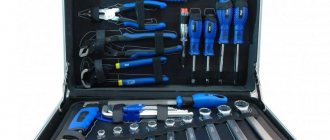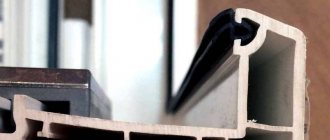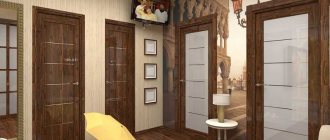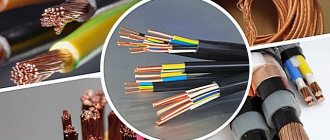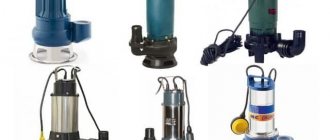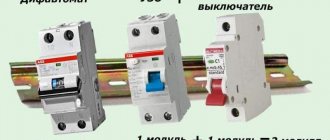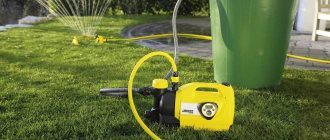Scanners for hidden wiring or metal are highly specialized devices. People think about purchasing them when there is a need to make repairs, move sockets, secure hanging furniture and appliances. Choosing a wiring detector is not easy; manufacturers often promise much more than the device actually can do. In order not to make a mistake and take a really good scanner, check out the rating of the best detectors for identifying hidden wiring and metal structures, which was prepared by our editors. The TOP includes devices of various price categories, which differ from each other in characteristics, functions and purpose.
What to look for when choosing
Before reading this rating, it should be clarified which criteria you should pay closer attention to. From a wide list of device characteristics, you should be primarily interested in the following:
- Detectable materials. Most of the models presented in the rating are capable of detecting electrical wiring, metal fittings, wooden sheathing or other frames. Some can “find” plastic (water and sewer pipes).
- Depth. In this case, everything is extremely simple - the technical characteristics of each model indicate the limiting values within which it can detect certain materials. In this case, it is recommended to purchase a device with a so-called “deep” reserve.
- Auto calibration. This implies automatic adjustment of the sensor to certain operating conditions. Detectors belonging to the budget and mid-price ranges require auto-calibration. For professional options, such actions are not performed, since their operating principle is completely different.
Checking work
In order to accurately determine the location of hidden wires, you should first learn how to use the indicator. To do this, you need to try working with it on open wires, pipes, and other elements. This will help you understand when and to what objects the device emits a signal.
Before making a purchase, you should test the indicator in a store. Any switched on electrical appliance is suitable for this. You can use its wire for testing. The device must be tested at different distances. The wire can be covered with a board or some plastic object. If the detection was successful, then you can safely buy the indicator you like.
Economy class detectors
This group contains the best hidden wiring detectors from the lowest price segment. Prices for such devices start from six hundred rubles and do not exceed four thousand.
Bosch Truvo, 2,900 – 3,500 rub.
Inexpensive but reliable Bosch Truvo Source ali-buy.com
A device designed for determining electrical wiring at home. Notification of detection is carried out by changing the glowing green diode to red. In addition, the presence of voltage on the wire is reflected by the blinking of the light bulb; a uniform glow means that there is a wire or other metal object in the wall.
The “stuffing” of the device involves searching for a source of electricity with a voltage of 110-240V and a frequency of 50/60Hz. It will find a cable with direct current, but it will show it like an ordinary piece of hardware.
Technical characteristics of Bosch Truvo Source kazan.vseinstrumenti.ru
Healthy! Bosch Truvo runs on three AAA batteries, which is not very convenient for rare household use. It would be much more practical to have a built-in battery and recharge from a USB connector.
ADA instruments Wall Scanner 80, 3,490 – 3,700 rub.
Detector for searching electrical wiring ADA instruments Wall Scanner 80 Source static.1k.by
It looks more solid than Bosch Truvo, has a digital display, detects not only non-ferrous and ferrous metals, but also wood. Rubberized casing provides relative safety in the event of an accidental fall. The search depth is similar to the previously described model:
- Copper and aluminum – 60 mm.
- Ferrous metal – 80 mm.
- The tree “searches” at a depth of only 20 mm, which is enough to detect the sheathing hidden under plasterboard or wall panels.
The device runs on a Krona battery, which guarantees no more than 5-6 hours of continuous operation. For home use it is enough, but for professional use you will need to have a spare power source.
Technical characteristics of ADA instruments Wall Scanner 80 Source kazan.vseinstrumenti.ru
Healthy! The ADA instruments Wall Scanner 80 body does not have special corners for marking. Therefore, when working with it, you will have to pick up a pencil or other marker.
BISON Professional DX-750, 3,400 – 3,700 rub.
Universal detector BISON Professional DX-750 Source cstor.nn2.ru
Based on the appearance and description of the technical characteristics of the device, it can be called the twin brother of the ADA instruments Wall Scanner 80 model. The only difference is the blue color of the case and other in-depth parameters. According to the description, it “reaches” ferrous metal at a depth of 100 mm, and non-ferrous metal – 80 mm. In comparison with the above-mentioned brother, the values are 20 mm higher for each point.
They also differ in price. The average price for a Hong Kong ADA is 100 rubles more expensive than the Chinese model, which is assembled in Russia.
Technical characteristics of BISON Professional DX-750 Source kazan.vseinstrumenti.ru
Important! The model is practically an analogue of the ADA instruments Wall Scanner 80, but has a greater search depth and is 100 rubles cheaper.
Resanta DM-2 61/10/521, 2,990 – 3,200 rub.
Metal detector Resanta DM-2 10/61/521 Source resantashop.ru
Ergonomic, inexpensive device for detecting ferrous metals, aluminum, copper and wood. Made in a comfortable ergonomic case with rubberized edges. The indication is displayed on a 1.8-inch display with blue backlight. Distinguishes between live and non-live wires. In terms of depth parameters, it is inferior to models that are higher in the ranking.
Has color and sound indication of metal detection. The interface is intuitive and simple. The depth indicators are not as great as those of earlier models, but they are sufficient for home use:
- Ferrous metals – 100 mm.
- Non-ferrous metals – 80 mm.
- Live copper cable (220V) – 50 mm.
- Wood – 20 mm.
Technical characteristics of Resanta DM-2 61/10/521 Source kazan.vseinstrumenti.ru
Healthy! Resanta DM-2 61/10/521 runs on a Krona battery. In case of inactivity, it turns off after 5 minutes.
Interskol ED-0.2, 600 – 900 rub.
One of the cheapest detectors for electrical wiring Interskol ED-0.2 Source interskol.ru
Representative of the simplest and most inexpensive versions of detectors. Suitable for home use and searching for electrical wiring with an accuracy of 2-3 cm. Indication is carried out by an audible signal, which is duplicated by flickering LED indicators. Powered by a Krona battery. It is easy to use, has rubberized inserts on the handle, and is self-adjusting. Copes with metal searches at a depth of up to 20 mm.
Technical characteristics of Interskol ED-0.2 Source kazan.vseinstrumenti.ru
Healthy! In terms of price-result ratio, the Interskol ED-0.2 model confidently completes the rating of the best budget hidden wiring detectors.
What types of hidden object search devices are there?
All modern devices designed to assist in construction work can be divided into three types:
- hidden wiring detectors;
- route-finding devices;
- electromagnetic field identifiers.
Models of search devices are distinguished according to several parameters.
Indication
When detecting wires and structures, alerts are made in various ways.
- Light indication
The system operates on LEDs. For materials of different compositions, certain color indicators are triggered.
- Sound notification
The duration of the sound signal and a certain tonality indicate the characteristics of the internal object.
The liquid crystal display provides the most complete information about the internal structure. Some models have all types of indication; such devices are expensive.
Detectors from the middle price category
This group contains wiring detectors in the price range from 4 to 10 thousand. All of them are equipped with a liquid crystal screen, which displays the results of the ongoing search and system tips. The devices operate in 4 modes:
- Search for phase wire.
- Search for metal and steel (reinforcement, metal frame rods for walls).
- Search for non-ferrous metals (copper and aluminum wires in a de-energized state).
- Search for wood (timber for sheathing walls and partitions).
Important! All of them operate on a 9V Krona battery and can be used for home and professional purposes.
Areas of application of indicators
The scope of application of the IPS depends on the configuration of the device and its sensitivity.
Basic models of combined detectors can be used for the following purposes:
- identification of hidden electrical wiring in ceilings, walls, floors;
- detection of electrical cable breaks;
- correct connection of electric meter phases;
- determination of phase wire;
- detection of ungrounded equipment;
- checking the serviceability of fuses and fuses;
- detection of locations of metal reinforcement in the wall,
Professional detectors
Detectors belonging to this group guarantee detection of the desired element with maximum accuracy. However, the cost of such devices differs significantly from those previously considered. If any of the budget or medium-sized radars can be purchased for home use (own construction), then purchasing professional devices will simply not be economically feasible. Therefore, they can only be found in the hands of real specialists.
Bosch D-tect 150 SV Professional, 42,900 – 45,800 rubles
Premium class detector Bosch D-tect 150 SV Professional Source 6.allegroimg.com
The best wiring detector for professionals with a corresponding price tag. Finds metal fittings at a depth of up to 150 mm, live cables at a depth of 60 mm. Able to recognize plastic water pipes, it runs on classic AA batteries. Among the distinctive advantages of the device are the following:
- The presence of four most necessary sensors for detecting metal, wood, plastic, and electrical wiring.
- Possibility of pre-classification of materials for greater safety.
- Auto calibration option.
- Compact design and excellent ergonomics.
- Maximum detection depth, up to 15 cm.
- Large, backlit display.
- Intuitive Russified interface.
- Protection class IP54, allowing the device to be used on any construction site.
- Possibility to select search mode for dry and wet concrete.
The Bosch D-tect 150 SV Professional uses Ultrawideband technology, which ensures maximum accuracy and determination of the desired material. The signal is played only when the device is in direct contact with the wall and moves. When a pulse intersects with extraneous signals (propagating from mobile phones, Wi-Fi router, remote control), an error notification is displayed on the screen. In this case, the operator needs to repeat the search process from the place where the overlap was detected.
Technical characteristics of the Bosch D-tect 150 SV Professional detector Source kazan.vseinstrumenti.ru
Healthy! Practice shows that the only drawback of the Bosch D-tect 150 SV Professional is its price. In addition, due to the specific nature of its operation, the device is characterized by increased energy consumption.
How to use
Using the detector is not difficult.
On its panel there is a signaling device (usually an LED, but there may also be a telephone speaker to sound a sound signal). The antenna of the device is moved along the wall and the indicator is observed (or listened to if the signal is audible). When the device detects wiring or structural components, the indicator will flash or make a sound. All that remains is to determine the routing and direction of laying the wires.
Depending on the design, the device may have different capabilities.
Using the same usage techniques, you can use different functions:
- indication of hidden objects of various types (wiring connected to the power source, magnetic and non-magnetic metal, non-metal);
- determining the accuracy of the object indication as a percentage;
- temperature measurement;
- determining the center point of metal objects;
- search for wooden inserts.
Expert opinion
Makhinov Vladimir Konstantinovich
Electrical Communications Specialist
The amount of functionality is determined at the time of purchase of the device. Please note that additional options significantly increase the cost of the device. Therefore, you need to know exactly what features will be used in order to pay only for the functions you need.
How to choose
The choice of a suitable device is based on a comparison of your needs and the capabilities of the model. Here it is necessary to take into account the volume of work to be done, the specifics of the search, the conditions and degree of accuracy of detecting hidden elements. If you have to survey large areas and search for small elements, thin or broken wiring, you will need a fairly accurate professional tool.
The optimal one is a combined type that can not only find an object, but also determine its material and configuration in the wall.
To search for ordinary wiring (for example, to eliminate the risk of short circuits when drilling holes), an inexpensive household detector is suitable. The price of the device plays a significant role - professional and multifunctional models are much more expensive than simple household appliances. Spending a lot of money for a one-time procedure is impractical, but for ongoing work it is a necessity.
Large area scanner Profinder 5000
Using the Profinder 5000, you can easily search not only for metal objects, but also for wood hidden under various surfaces. Another advantage of the device is its wide search area, which allows you to quickly explore large areas. A series of light indicators are used to indicate the location of finds. The device is powered by only 2 batteries. It is also very simple to operate and does not require the owner to have special skills.
$41.99 | Buy
Top
Studpop Miniature Magnetic Scanner
The Studpop scanner is a magnetic type and is very compact in size and easy to use. Using it to explore a large wall will be quite tedious, but for searching in local areas it has no equal. The device does not require battery power and is immediately ready for use. The device is compatible with almost any type of surface, including drywall and tiles.
$12.89 | Buy
Top
When might wiring location information be needed?
During renovations, drilling of walls is often required, and this is where hidden wiring becomes a problem, especially if the cables were laid a long time ago and there is simply no plan for electrifying the room.
To avoid damaging the wiring during work, you should know its location.
In general, such information may be required if:
- Redevelopment of the electrification of the premises (changing the location of sockets, switches, etc.);
- Redevelopment of the premises itself (making new openings - doors, windows);
- Problems with the wiring (break or short circuit);
- Interior improvements by hanging various appliances and furniture on the walls.
In case of replacement, it is not necessary to know the location of the wiring, since the old one will be removed anyway, so the house network is de-energized, and then the wires are simply pulled out of the grooves (they are usually plastered, and it is not difficult to pull them out), after which the circuit will be clearly visible.
And then it’s up to the owner to decide whether to lay the new cable in the old grooves or cut new ones.
Information about the location of wiring in walls is most often required when carrying out drilling work.
Next, we'll look at what you can do to determine where the cables run in the wall if there is no room layout.
Let's go back to the source
Many people know that according to the PUE, cables are laid only at right angles.
That is, the wiring is not placed along the shortest path, it should only run strictly horizontally or vertically, and the change in direction is made at an angle of 90 degrees.
This information is not enough to determine where the cable is laid, but in the future it will help at least roughly understand which way to look for the wires from the outlet or junction box.
Alternative methods
Visual search.
If these devices are not available, then alternative methods can be used. And the first of them is visual.
In the process of sealing grooves with cables, it is not always possible to do everything very smoothly.
Therefore, it is often possible to detect the location of the wiring along a small protrusion, but for this you need to carefully examine the room, and the wallpaper will have to be removed - the wall must be “bare”.
Radio.
An ordinary radio receiver, which does not need to be modified, can also help in the search. It is enough to set the frequency on it to 100 kHz. And then we take the receiver and go searching.
To detect, we move the antenna along the wall. The cable detection signal will be an increase in noise from the speaker.
The accuracy, of course, is not high, but it is quite possible to determine the channel with the wiring.
You can also use an old tape recorder or cassette player, but to do this you need to extend the wiring going to the magnetic head. This will be the antenna.
That is, we carefully remove the head from the player, extend the wires, and then move it along the wall.
Popular with readers: How to choose a cordless screwdriver, the pros and cons of the device.
Portable finder CH Hanson 03040
The CH Hanson 03040 magnetic finder is one of the most portable devices in the selection and is particularly easy to use. Its dimensions are so small that it easily fits into clothing pockets. The absence of electronic components allows you to forget about periodic battery changes and calibration. The recommended way to find nails with this tool is to use a smooth motion that follows the outline of the letter S.
$13.77 | Buy
Top
Scanner for any surfaces Dr. Meter Fi-1
It doesn't matter where exactly you look for hidden metal objects with the Dr. Meter Fi-1. This could be walls, ceiling or floor. To help the user, 3 operating modes are offered, as well as a display that will tell you the exact location of the finds. The maximum scanning depth is 7.6 cm. Both the smallest fasteners and large ones, such as pipes or fittings, are available for search.
$17 | Buy
Top
Cassette player
Solder a flexible cable to the player head (you can take it from a USB cable). Turn off the motor in the player (less noise, and batteries are saved). Connect the load to the wiring. Press the Play button and move the head of the player to look for the place where the greatest hum is generated. True, the sensitivity of this device is quite low. When removing wires from 1 cm and further, especially under plaster, the device almost does not react.
Budget Magnetic Scanner Diamond Resource
If you are on a very limited budget, you should pay attention to the Diamond Resource device. The main active element in it is a pair of ordinary magnets, compatible with any walls. The absence of an electronic component in the device can be considered a positive thing, since there is simply nothing to break here. Moreover, the dimensions of this scanner are such that almost any pocket is suitable for it.
$10.99 | Buy
Top
Removing wallpaper
If you are carrying out a major renovation at home, and the current state of the walls and wallpaper does not bother you too much, you can simply rip off all the excess from the wall, right down to the base (brick or concrete). Old grooves can then be visible visually, or palpable by touch, thanks to bulges or, conversely, characteristic indentations.
If the wall is not plastered at all, and there is bare concrete under the wallpaper, then the cable grooves will be 100% visible even to the naked eye.
